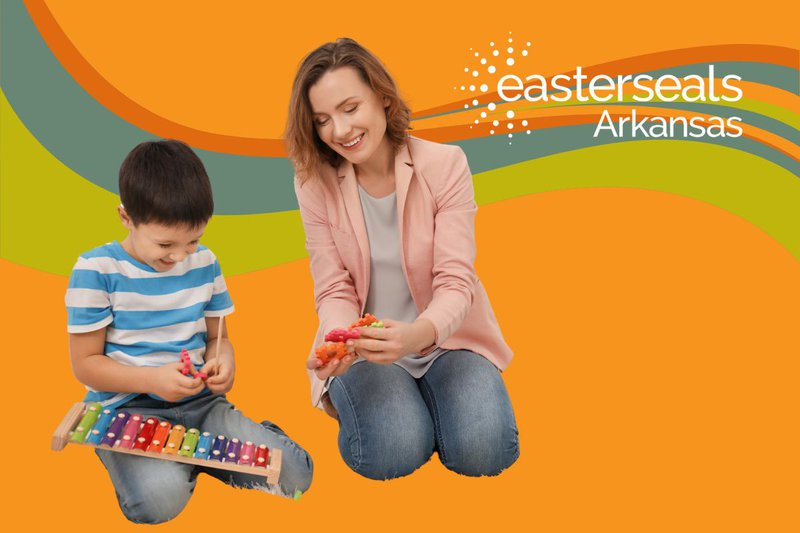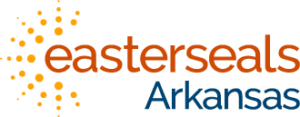
When discussing autism and early education, timing is more important than many realize. A well-structured preschool plan can effectively support your child’s growth in speech, play, and learning. Indeed, early support often leads to noticeable progress—especially for autistic children. However, not every program fits every child. Therefore, we’ll discuss what tends to work, what to look for, and how to spot meaningful growth from the start.
Key Takeaways:
- Firstly, early support before age 5 significantly improves communication, behavior, and school readiness in autistic children.
- Moreover, proven preschool approaches like ABA, Pivotal Response Training, and TEACCH should be adaptable for best results.
- Additionally, school readiness signs include following directions, social play, expressing needs, and showing interest in learning.
- Furthermore, strong IEPs outline current skills, measurable goals, services, and how progress will be tracked; parent input is crucial in shaping them.
- In particular, UDL strategies—visual aids, structured routines, and multisensory materials—support varied learning styles.
- Meanwhile, sensory-friendly classrooms utilize soft lighting, quiet areas, and tools like noise-reducing headphones, creating a more accommodating atmosphere for children with autism and their education.
- Furthermore, communication support such as PECS, speech tablets, and sign language, alongside social-emotional skills taught using clear routines, is essential.
- Additionally, positive behavior programs like PBS and ABA rely on encouragement and personalized plans.
- As students approach age 16, transition efforts begin, highlighting future goals, self-advocacy, and job or college skills.
- Notably, parents have rights under IDEA, and advocacy and legal help are available when needed.
- Finally, effective teacher preparation involves regular, practical training backed by school leaders and peer mentors.

Autism and Education: Effective Early Interventions That Support Lifelong Learning
Early education is a powerful tool, especially for children with autism. When support begins early, it lays a strong foundation for growth, easing the way for later learning and social development.
Early Educational Interventions Build Lifelong Skills
Children with autism benefit most when interventions start before age five. Early support significantly strengthens core skills like communication, play, and self-regulation, which are areas critical for classroom success. Consequently, these interventions help prevent learning gaps that can otherwise widen without proper attention.
Strong early programs focus on:
- Talking and listening
- Play and social routines
- Following directions
- Basic independence
- Behavioral strategies
Each child learns differently. Some may need help with language, while others benefit from support with emotional regulation or interaction. A structured plan that targets individual needs also ensures smoother transitions into kindergarten and beyond.
Preschool Teaching Methods That Support Autistic Learners
Structured, play-based teaching methods are indeed proven to help children on the autism spectrum thrive in early education settings. Firstly, these methods create a supportive environment where children can engage actively in their learning. Furthermore, by incorporating play, these approaches make learning more enjoyable and less intimidating for young children.
As a result, children are more likely to participate and show progress. These methods encourage social interaction and communication, which are crucial skills for autistic children. Overall, the combination of structure and play in education provides a well-rounded foundation for their development.
Approaches That Work for Autism and Education
The most successful programs blend behavioral methods with child-led play. These include:
- Applied Behavior Analysis (ABA), particularly when paired with games and rewards, promotes engagement.
- Pivotal Response Training, which effectively embeds learning into playtime, encourages active participation.
- TEACCH, by utilizing visuals and step-by-step instructions for clarity, enhances comprehension.
Additionally, look for classrooms that offer:
- Small group sizes, as this fosters individualized attention.
- Visual aids everywhere, ensuring consistent cues.
- Short tasks with fun breaks, maintaining interest and focus.
- Teachers tracking progress individually, allowing for personalized development.
The Back-to-School Blueprint offers tools that help educators and families apply these strategies effectively.
Recognizing School Readiness in Autistic Children
Before starting school, it’s important to know what skills a child has and what support they might need. The SQuAD method (Structure, Quality, Attention, Direction) helps identify readiness.
Signs of Readiness
Common readiness indicators include:
- Firstly, following simple directions
- Additionally, playing near or with others
- Moreover, communicating needs (pointing or asking)
- Furthermore, sitting for short tasks
- Finally, showing interest in letters or rhymes
These signs clearly show a child is beginning to engage with learning routines. In addition, tools like picture boards and calm zones can make school participation easier and more comfortable.
Individualized Education Programs (IEPs) Shape Success
IEPs are key to supporting autistic students throughout their school years. They provide a personalized roadmap for growth.
A good IEP includes:
- Present levels of performance (strengths and needs)
- Clear, measurable goals
- Service details (what, who, how often)
- A plan for tracking progress
Goals should be specific and achievable. For example: “Will answer yes/no questions in 4 out of 5 chances.” Services may include speech therapy, social skills coaching, or classroom support.
Collaboration Fuels Progress for Autism and Education
Parents and educators must work together to keep IEPs relevant and effective.
Effective Goal-Setting and Monitoring
Regular meetings allow schools and families to:
- Firstly, share what’s working
- Next, adjust goals based on new progress
- Additionally, ensure services remain appropriate
Moreover, parents should come prepared with notes about challenges, successes, and questions. Furthermore, communication apps and regular updates help maintain consistency across home and school.
Curriculum Development Supports Diverse Learning Styles
Each student with autism has a unique learning profile. Therefore, when the curriculum is tailored to a student’s interests and needs, learning significantly improves. For example, a child who loves maps might use them to build reading skills.
As such, plans that incorporate:
- Visuals and hands-on materials
- Step-by-step directions
- Real-world examples
…tend to be more effective for autistic learners in their education.
According to NCES data, over 11% of IEP students have autism. Thoughtful curriculum changes can help every one of them thrive.
Inclusive Classrooms Build Better Outcomes
Inclusive education ensures every student has a fair chance to succeed.
Universal Design for Learning (UDL) in Practice
UDL involves teaching in multiple formats:
- Books, videos, and hands-on tools
- Options for showing learning (drawing, speaking, using tech)
- Movement-based learning for kids who can’t sit still
Creating Sensory-Friendly Learning Environments
Autistic children often experience intense sensory input, which can affect their ability to learn.
Common Sensory Challenges with Autism and Education Settings
These sensory challenges may include:
- Firstly, bright lighting can be overwhelming.
- Secondly, loud noises often disrupt focus.
- Additionally, tight clothing may cause discomfort.
- Finally, strong smells can be distracting.
Therefore, designing classrooms with comfort in mind helps students stay focused.
Helpful Sensory Tools
- Firstly, soft lighting and quiet zones create a calming environment.
- Secondly, flexible seating options such as wiggle chairs and cushions provide comfort.
- Additionally, weighted lap pads and fidgets can offer soothing pressure.
- Finally, noise-canceling headphones help minimize auditory distractions.
Moreover, sensory breaks—such as stretching or quiet time—are essential. They allow students to reset and return to learning, ready to engage.
Supporting Communication and Social Growth
Communication is a major focus in autism education.
Tools for Nonverbal Students
Supporting communication in nonverbal students requires thoughtful tools and strategies. Here are some helpful options:
- Picture Exchange Communication System (PECS): Firstly, PECS enables children to communicate using pictures, promoting interaction and understanding.
- Speech-generating devices: Secondly, these devices allow children to express themselves verbally, fostering independence and self-expression.
- Basic sign language: Additionally, introducing sign language offers a visual and physical way for children to communicate their needs effectively.
By matching these tools to the child's abilities, educators can foster greater participation and boost confidence, making communication more accessible and empowering for each child.
Teaching Social-Emotional Skills
Teachers utilize various strategies to foster social-emotional skills in students with autism. These methods help children navigate social interactions more effectively. Here’s a closer look at these tools:
- Feelings charts: Firstly, feelings charts are visual aids that help students identify and express their emotions. By recognizing different feelings, children learn to understand and manage them, promoting emotional intelligence.
- Role-playing games: Additionally, role-playing games provide safe and structured opportunities for students to practice social scenarios. Through these interactive sessions, children can rehearse and refine their responses, enhancing their social skills in real-world situations.
- Clear routines for social behaviors: Lastly, establishing clear routines for social behaviors offers predictability and structure. Consistent practices reinforce expected social interactions, enabling students to gain confidence and build meaningful relationships.
Together, these tools create a supportive environment where students can develop vital social-emotional abilities, laying a foundation for lifelong interpersonal success.
Visit the Center on Secondary Education for Students with Autism Spectrum Disorders for more practices.
Autism and Emotional Education: Building Peer Relationships
Friendships are crucial for children, helping them feel included and valued while fostering a sense of belonging and understanding. These connections enhance social skills, empathy, and emotional growth, allowing children to learn communication, cooperation, and conflict resolution. For autistic children, peer relationships provide opportunities to practice social behaviors in a supportive environment. Programs like buddy systems and Circle of Friends encourage inclusivity and teach empathy, guiding children to form meaningful connections. By nurturing these bonds, children develop confidence and self-worth, essential for their overall development and well-being.
Peer Support Programs
Effective models include:
- Buddy systems
- Circle of Friends programs
- Whole-class empathy lessons
These programs teach students to be inclusive and supportive. Teachers guide each step, building interactions into relationships over time.
Managing Behavior Positively
Behavior is communication. Positive support strategies encourage better outcomes.
Positive Behavior Support (PBS)
PBS teaches what to do instead of punishing errors. For example, showing a “help” card instead of yelling.
Applied Behavior Analysis (ABA)
ABA breaks learning into small steps with clear rewards. It’s also helpful for teaching everything from turn-taking to complex classroom behavior.
Preventing Meltdowns
Know the triggers. Prepare calming strategies. Use visuals. Keep choices simple. Celebrate small successes. Overall, consistency is key.
Planning for the Future: Transition to Adulthood
Transition planning starts early and gives autistic students a voice in their future.
Creating an Individualized Transition Plan
By age 16, all students with an Individualized Education Program (IEP) must have an Individualized Transition Plan (ITP). This plan is crucial as it outlines goals across several key areas essential for their future growth and independence.
Firstly, it focuses on goals related to college or job training, preparing students for the transition from school to a more adult environment. This preparation ensures they acquire the skills needed for success in higher education or the workforce.
Secondly, the ITP addresses independent living skills. These goals are designed to help students achieve greater autonomy and self-reliance, equipping them with essential daily living skills.
Lastly, the plan emphasizes social and emotional growth. It includes strategies to enhance interpersonal skills and emotional resilience, which are vital for navigating adult relationships and personal well-being.
By thoughtfully planning these areas, the ITP serves as a roadmap for autism and higher education, guiding students toward a fulfilling and independent future.
Advocacy: Parents as Powerful Partners
Families play a vital role in shaping their child’s education.
Legal Rights Under IDEA
The Individuals with Disabilities Education Act (IDEA) guarantees:
- Free, adapted education
- Learning in the least restrictive environment
- Parent participation in all decisions
Preparing for IEP Meetings
Bring:
- Notes on your child’s strengths and needs
- Schoolwork samples or reports
- Questions or suggestions
Support people are welcome. Bring someone if it helps you feel confident.
Advocacy Resources
Workshops and resources can be found through:
- Wrightslaw
- Local parent groups
- School-based family resource coordinators
Be persistent. Your voice matters.
Empowering Educators Through Professional Development
Teachers need training and support to meet the needs of autistic learners.
Training That Works
Effective training focuses on:
- Communication supports
- Emotional regulation strategies
- Inclusive class design
Ongoing learning, not one-time sessions, builds skill and confidence.
How Schools Can Support Teachers
Strong leadership sets aside time for:
- In-class mentoring
- Guest expert trainers
- Team-based case reviews
Cooperation across school teams leads to better outcomes for students.
Creating Community for Educators
Teachers benefit from sharing ideas and support.
Networks That Help
Resources include:
- National Education Association (NEA)
- Autism Society
- Local workshops and training centers
Online communities provide space to exchange strategies and feel supported.
We teach best when we feel prepared and connected.
Help Your Child Get the Right Start
Strong early education changes lives. Whether you're a parent, educator, or caregiver, you have the power to shape a child's success. Let's work together to build a path tailored to every learner.
Contact Easterseals Arkansas today to learn more about how you can get involved or access support.
